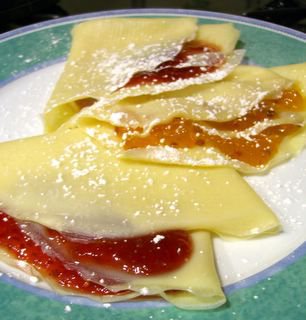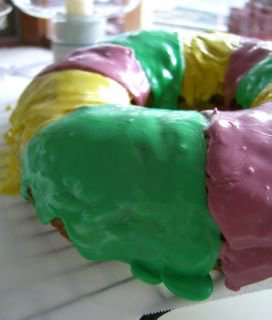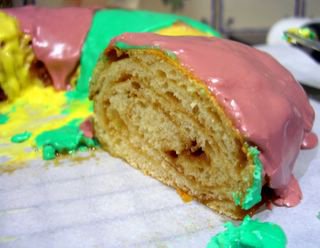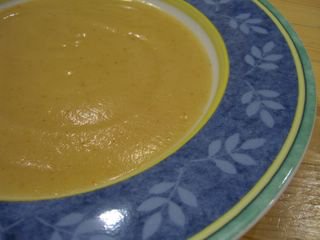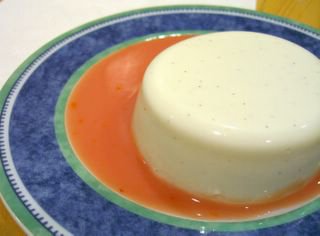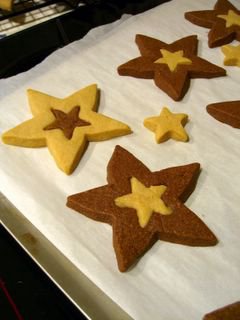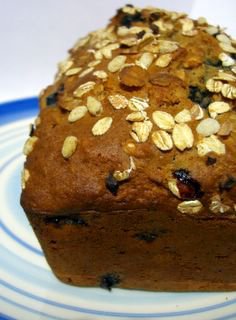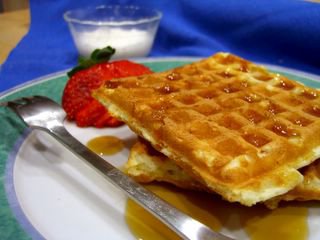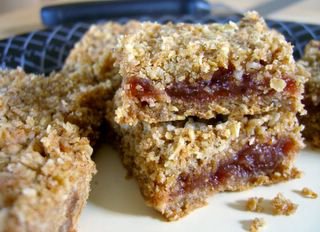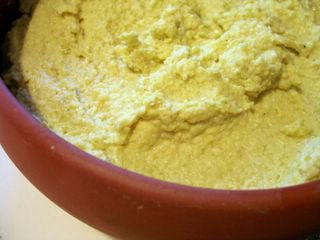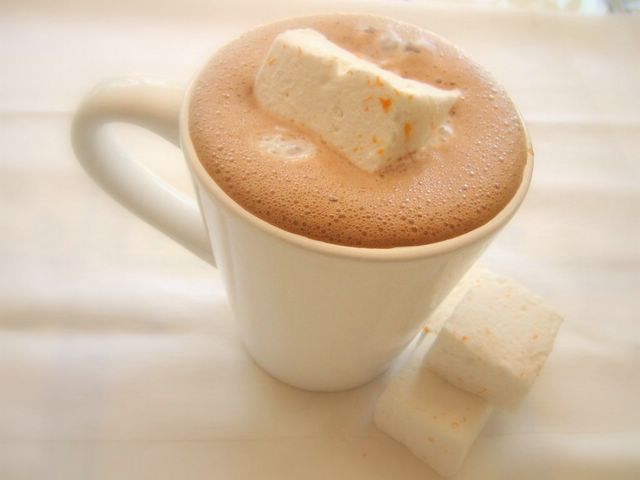Crepes for Pancake Day
This recipe is from Tante Marie, a famous French cook who, according to some "set new standards for French cuisine". With a name like "Aunt Marie", however, I find it rather difficult to believe that there actually was such a person. I could be wrong here, but it probably isn't unlikely that the name was a creation of someone trying to sell a cookbook. Not that there's anything wrong with that because the recipes that originated with Tante Marie's French Kitchen(now out of print, I think) are some french classics.
Take this crepe recipe, for example. It is lighter than most, using a combination of water and milk in the batter. It comes together amazingly fast, is versatile and delicate in taste and texture. The crepes are also very easy to work with, which makes them ideal for rolling or folding around different fillings, both savory and sweet. This recipe was also chosen as the best pancake recipe by a group of chefs who include Nigella Lawson, Nigel Slater and Heston Blumenthal (of the Fat Duck) . I'm still partial to the fluffy american style of pancakes, but these are excellent.
Let me stress that you do not need a crepe pan to make crepes. All you need is a good skillet, lightly greased. I think that a lot of people have never made crepes at home because they thing they need special equipment to do it, but this is definately not the case. Once the batter is in the pan, use the handle to lift it up and swirl the batter around to create a crepe of uniform thickness.
My absolute favorite way to eat crepes is with jam, for either breakfast or dessert. The ones in the photo above have raspberry and cloudberry jam in them, and are topped with a bit of confectioners sugar. Other sweet fillings that are good are butter, sugar and lemon juice or Nutella and banana slices. For savory fillings, I recommend leaving out the brandy or vanilla extract, which is a good substitution if you do not want to buy a whole bottle of brandy to use one teaspoon. Try filling the crepes with peppers, cheese and shredded chicken or a sauté of peppers, onions and mushrooms, with or without feta cheese, for a great main course.
200 ml. milk
100 ml. water
100 g. all-purpose flour (3/4 cup plus 2 tsp)
2 eggs
1/4 tsp salt
1 tsp vegetable oil
1 tsp brandy (optional)
Place flour in a large bowl, add milk and water gradually, whisking until the mixture is smooth. Beat in eggs, salt, vegetable oil and brandy (or vanilla extract), if using. Make sure batter is very smooth, then set aside to rest for at least 20-30 minutes.
Heat a 10-inch skillet over medium-high heat. Lightly grease and pour a measure of batter onto the skillet (I used a scant soup ladel full, about 1/4 cup). Pick up the skillet and swirl the batter around until it even coats the entire bottom of the pan.
Cook until the edges come away from the pan and the top of the crepe looks almost dry, about 3 minutes. Turn and cook the other side for about a minute.
Fill with jam (or other desired filling) and serve immediately.
Makes about ten 10-inch crepes (can be doubled or tripled)
